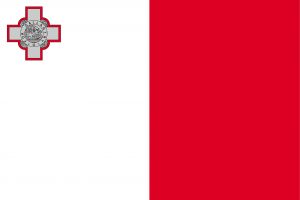Language/Maltese/Grammar/How-to-Use-Be
Hi Maltese learners! 😊
In this lesson, we will focus on the verb "to be" which is essential to form any sentence in Maltese. We will go through the different forms of "to be" in the present tense, how to use it in a sentence, and some interesting cultural facts about the Maltese language. By the end of this lesson, you will be able to form simple sentences and express basic concepts in Maltese.
After mastering this lesson, these related pages might interest you: Definite Articles in Maltese & Present Tense.
Present Tense of "To Be"[edit | edit source]
The present tense of "to be" in Maltese is formed by adding the present tense marker "j-" to the root verb "kun":
| Maltese | Pronunciation | English |
|---|---|---|
| jien kien | yeen kyen | I am |
| inti tiegħu | inti tieh-oo | You are (singular) |
| huwa, hi, hawn, ħija huma | hoo-wa, he, hawn, he-ya hoo-ma | He, she, it is/ They are |
Here are a few examples to illustrate the use of "to be" in the present tense:
- Ġanni huwa wkoll Maltaġis. (John is also Maltese.)
- Inti hawn it-tielet darba? (Are you here for the third time?)
- Il-ħuttaf hu huma bżonn flimkien. (The birds need each other.)
Using "To Be" in a Sentence[edit | edit source]
In Maltese, the verb "to be" can be used as a linking verb, connecting the subject to its predicate. The predicate is the part of the sentence that comes after the verb and adds information about the subject. The predicate can be an adjective or a noun. For example:
- Ġużeppi huwa qawwi. (Joseph is strong.)
- Il-ktieb hu ħelu. (The book is beautiful.)
As you can see in the examples above, "to be" is always followed by an adjective or a noun in Maltese.
Interesting Facts[edit | edit source]
- Maltese is the only Semitic language written in Latin script. It has some characteristics of Semitic languages, but it also includes words from Romance and other languages.
- Maltese is the official language of Malta, but English is also co-official and widely spoken. This is due to the British colonial history of Malta.
- The Maltese language has been influenced by various languages over the centuries, including Arabic, Italian, French, and English.
Now, let's have a dialogue so you can see how to use "to be" in a context:
- Person 1: Jien kien qawwi meta kelli għaxar snin. (I was strong when I was ten years old.)
- Person 2: Għalxejn ma tkunx ħaġa pozittiva? (Why wouldn't it be a positive thing?)
- Person 1: Mela ħin fil-ħajja ħa jibdew isiru affarijiet differenti. (Well, over time, things have to change.)
Conclusion[edit | edit source]
In this lesson, we went through the present tense of "to be" in Maltese, how to use it in a sentence, and some interesting cultural facts about the Maltese language. Remember that practice makes perfect, so don't hesitate to start forming your own sentences and experimenting with "to be" in different contexts. To improve your Maltese Grammar, you can also use the Polyglot Club website. Find native speakers and ask them any questions!
➡ If you have any questions, please ask them in the comments section below.
➡ Feel free to edit this wiki page if you think it can be improved. 😎
Finished this lesson? Check out these related lessons: Plurals & Questions.

